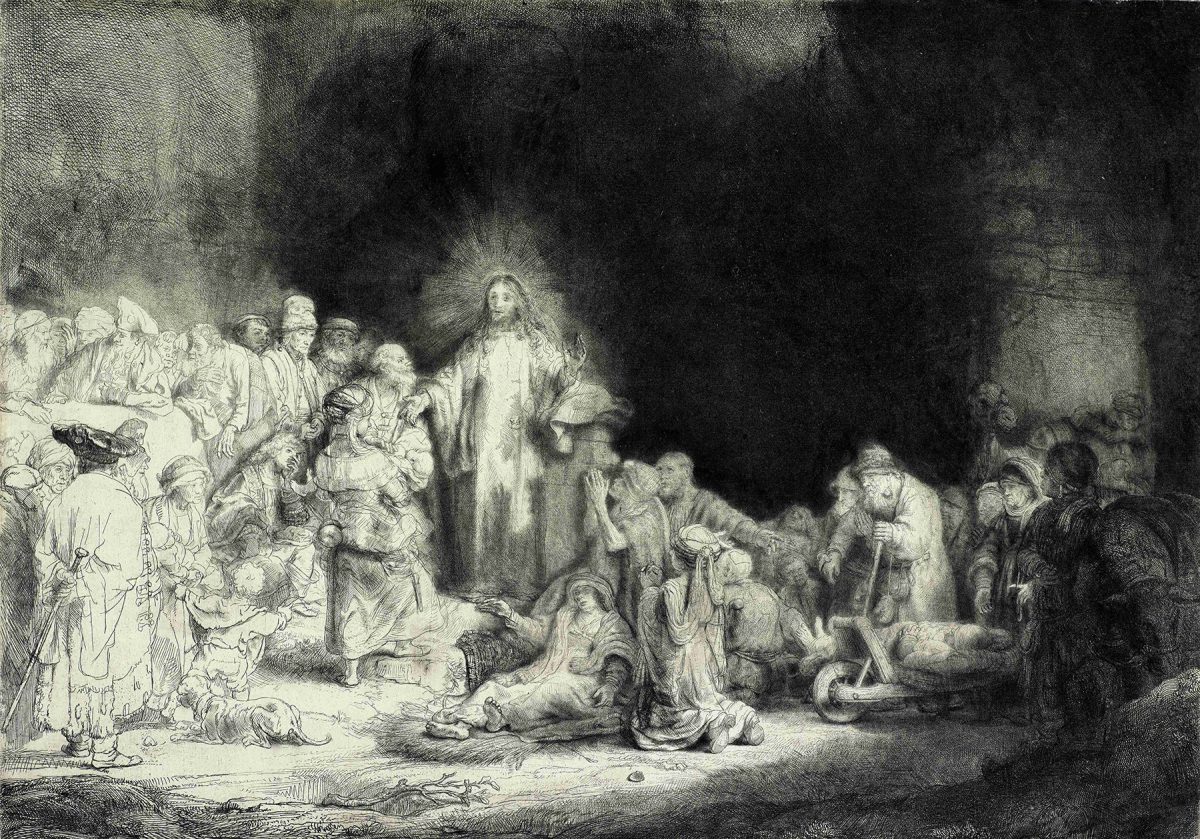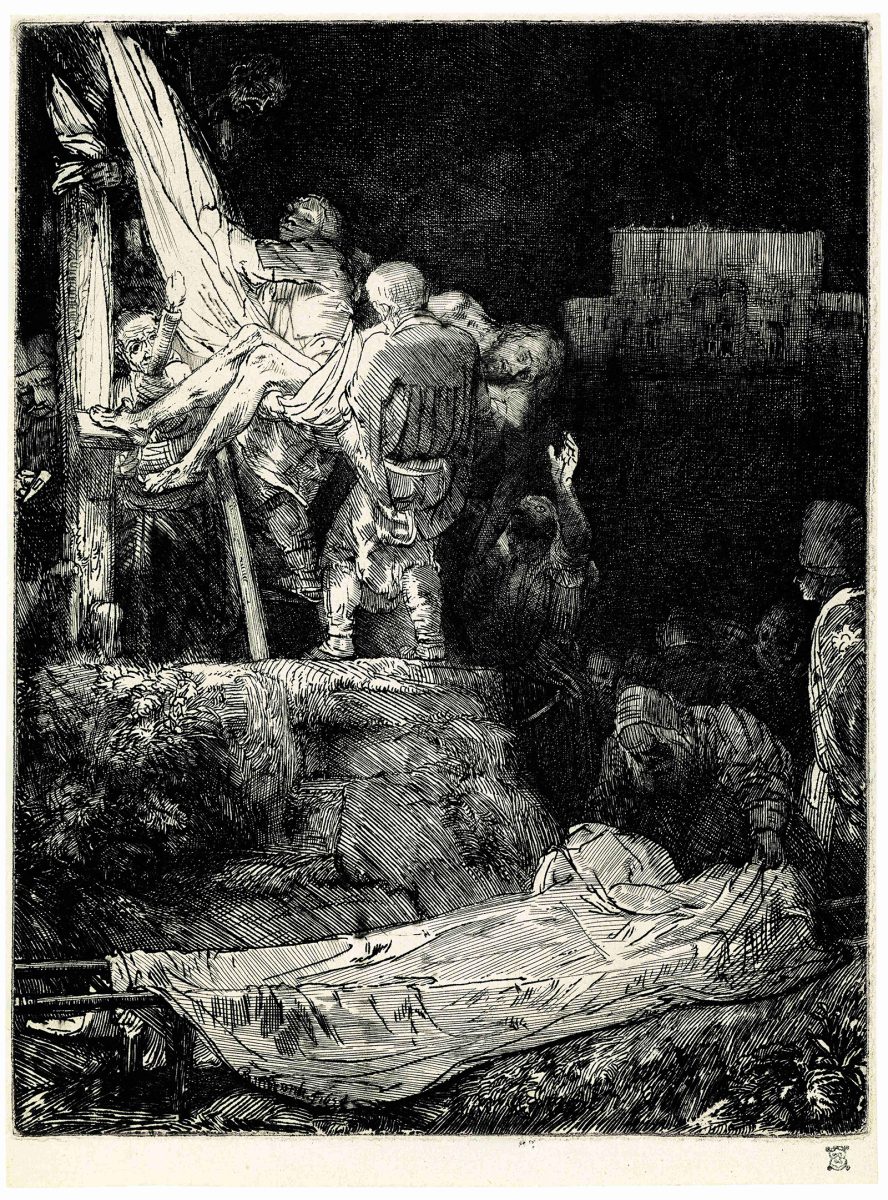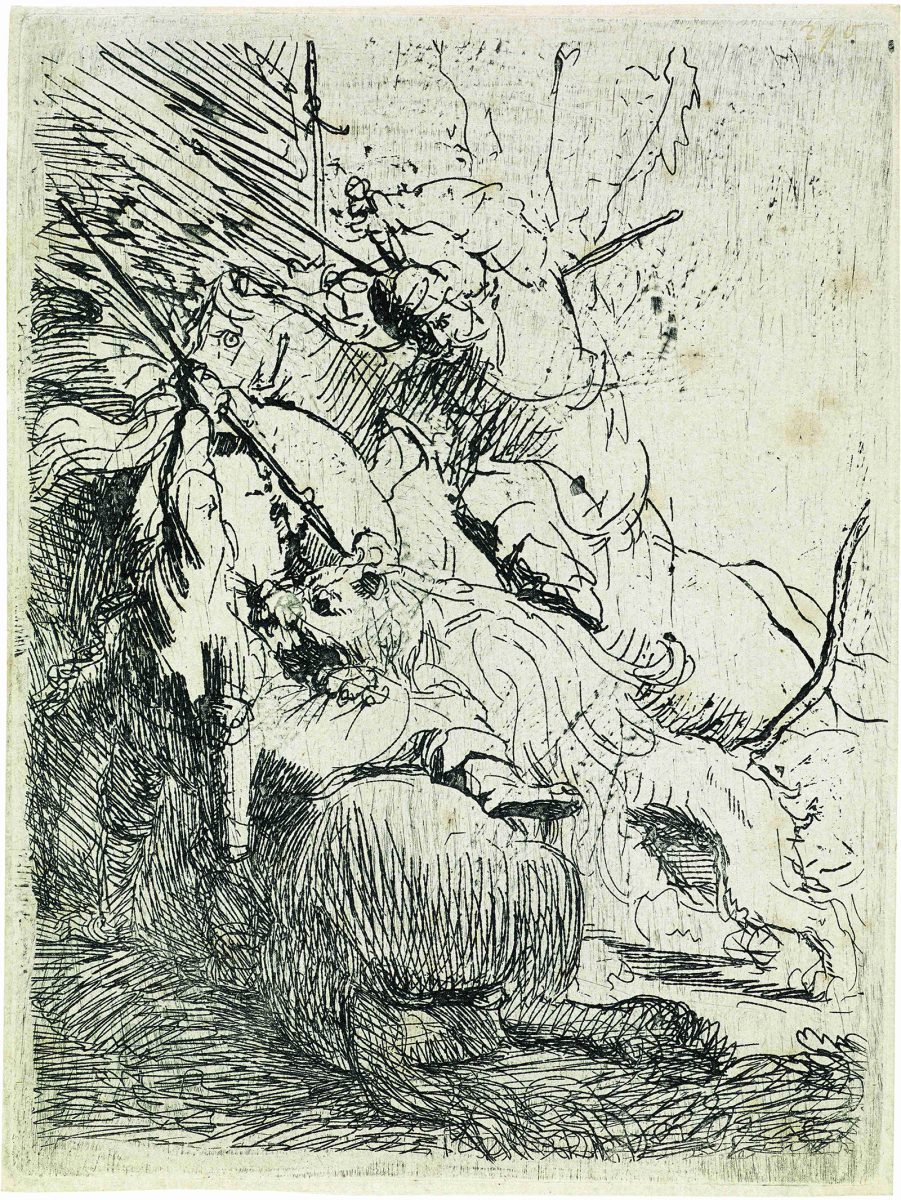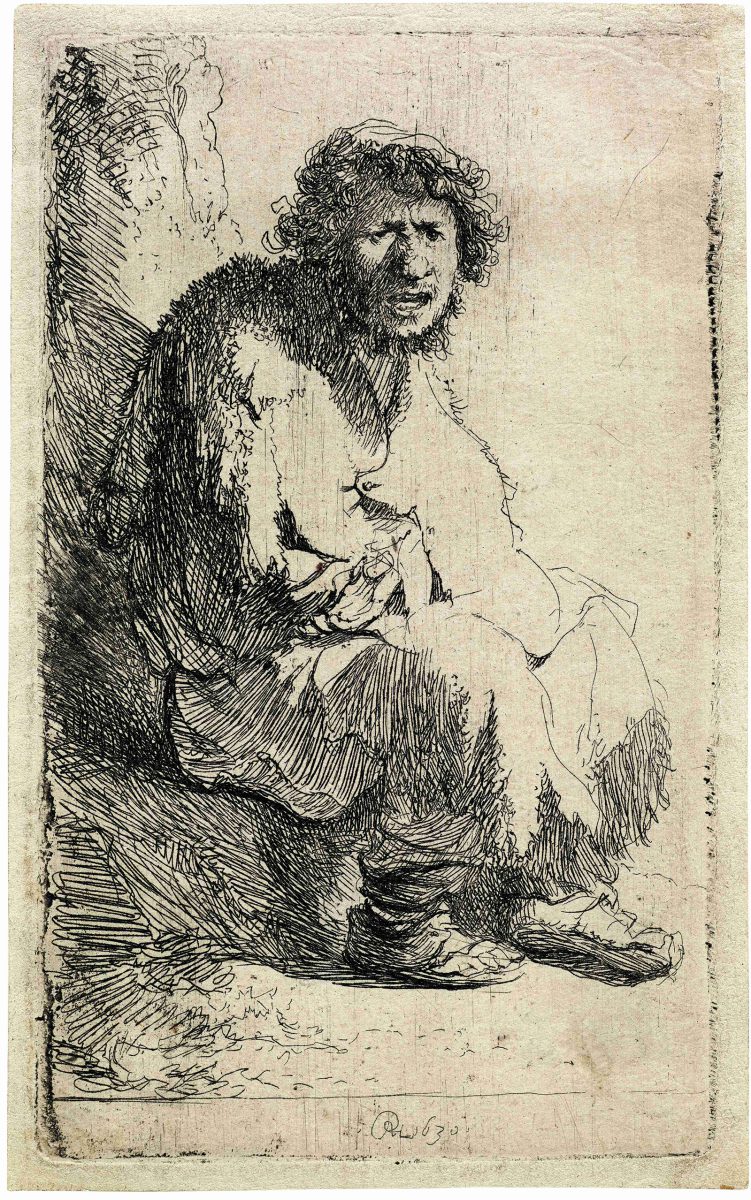Most of the Fondation William Cuendet & Atelier de Saint Prex’s sixty prints by Rembrandt come from the collection of Pastor Cuendet, who owned examples from the Dutch artist’s remarkable series of prints illustrating the Scriptures. The finest examples from Cuendet’s collection, many of which depict Jesus preaching amidst both disciples and adversaries, are The Hundred-Gulden Coin and Christ Preaching also called La Petite Tombe. The Fondation’s copy of Rembrandt’s The Three Crosses and an exceptional print of his Descent from the Cross by Torchlight are other highlights of its holdings. Gérard de Palézieux's bequest further enriched the Fondation’s collection of works by Rembrandt. That gift included a copy of The Flight into Egypt, an image reworked on a copperplate by Hercule Segers, and a print entitled The Reclining Negress, although it is probably simply a nude woman reclining in the half-light of an alcove.
Rembrandt van Rijn was born in 1606 in the university town of Leiden, at the dawn of a prosperous period for the Dutch Republic. As a young man, he gave up his classical studies to devote himself entirely to art, apprenticing with a painter in his hometown before perfecting his technique in the Amsterdam studio of Pieter Lastman, a history painter. Thereafter he set up his own studio in Leiden, then settled permanently in Amsterdam in 1631, at the age of twenty-five. Rembrandt quickly found success with both his portraits and his group paintings, the most famous of which is perhaps Dr Tulp's Anatomy Lesson. These prosperous early years coincided with his first marriage, though they were to be followed by more bitter decades. Yet despite the personal tragedies, financial setbacks and the disinterest of his contemporaries that followed, Rembrandt never abandoned his genius, as his distinctive late masterpieces testify. Printmaking, which Rembrandt practiced since his start in Leiden, occupied an important place in his career. The medium allowed him to experiment, as shown by his many etched self-portraits, and they were also a practical means of disseminating his work to a larger public. But above all it was the expressive properties of printmaking that attracted the Dutch master. With his treatment of chiaroscuro and his mastery of composition and staging, Rembrandt made full use of the language of etching, which came with a graphic flexibility that burin engraving didn’t offer. His characteristic technique, with its abundance of irregular strokes, spontaneous gestures and retouches, gave rise to exceedingly powerful compositions. From the 1640s, in addition to his self-portraits, portraits of notables and genre scenes, Rembrandt increasingly etched landscapes, such as the famous Three Trees. But it was undoubtedly in his scenes from the Bible that Rembrandt's genius for printmaking flourished, particularly in crowd scenes such as The Hundred-Gulden Coin, Ecce Homo and The Three Crosses.




